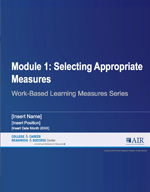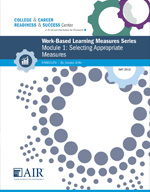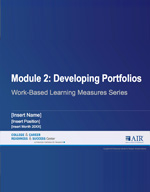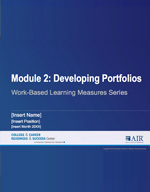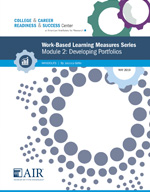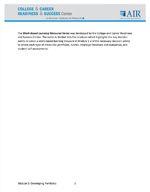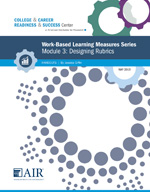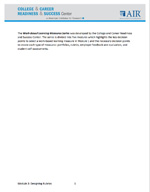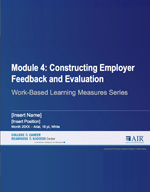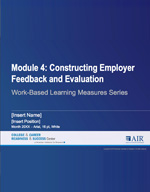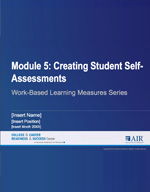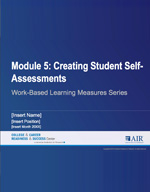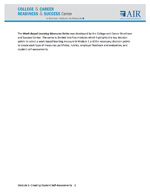How can districts and schools measure and document employability skills and other career-ready knowledge students obtain from work-based learning experiences? Measuring student learning while participating in work-based learning experiences gives students an opportunity to reflect on their work-based learning experiences and connect what the knowledge and skills they’ve learned to future career goals. States, schools, and districts can use the data to improve the quality of work-based learning experiences for all students.
The series is divided into five modules which highlights the key decision points for selecting work-based learning measures that meet your needs. Then, it guides users through key decision points for developing several different types of measures, including: portfolios, rubrics, employer feedback and evaluation, and student self-assessments.
The modules are designed for a team of committed partners — from secondary and postsecondary education, labor, policymakers, and business and industry — to select a work-based learning measure that assesses student learning and align the development iwth promising best practices on how to develop each measure.
To listen to the modules, click the link to download the PowerPoint presentation. Once the presentation is downloaded, click on Slide Show from the PowerPoint menu and choose “Play from Start.” A recorded version of the PowerPoint will begin automatically. Accessible slides and transcripts are also available for all Modules.
Module 1: Selecting Appropriate Measures
Module 1 introduces the various types of measures to assess students learning from work-based learning experiences and outline the key decision points state and district teams need to consider in order to select an appropriate measure.
Narrator: Jessica Giffin
Module 2: Developing Portfolios
Module 2 outlines the key decision points state and district teams need to consider when developing a portfolio to measure students learning from work-based learning experiences.
Narrator: Jessica Giffin
Module 3: Designing Rubrics
Module 3 outlines the key decision points state and district teams need to consider when developing a rubric to measure students learning from work-based learning experiences.
Narrator: Jessica Giffin
Module 4: Constructing Employer Feedback and Evaluation
Module 4 outlines the key decisions to develop employer feedback and evaluation to assess student learning from work-based learning.
Narrator: Jessica Giffin
Module 5: Creating Student Self-Assessments
Module 5 explores the benefits of student self-assessments for measuring work-based learning experiences and discusses the decision points needed to develop a student self-assessment.
Narrator: Jessica Giffin


